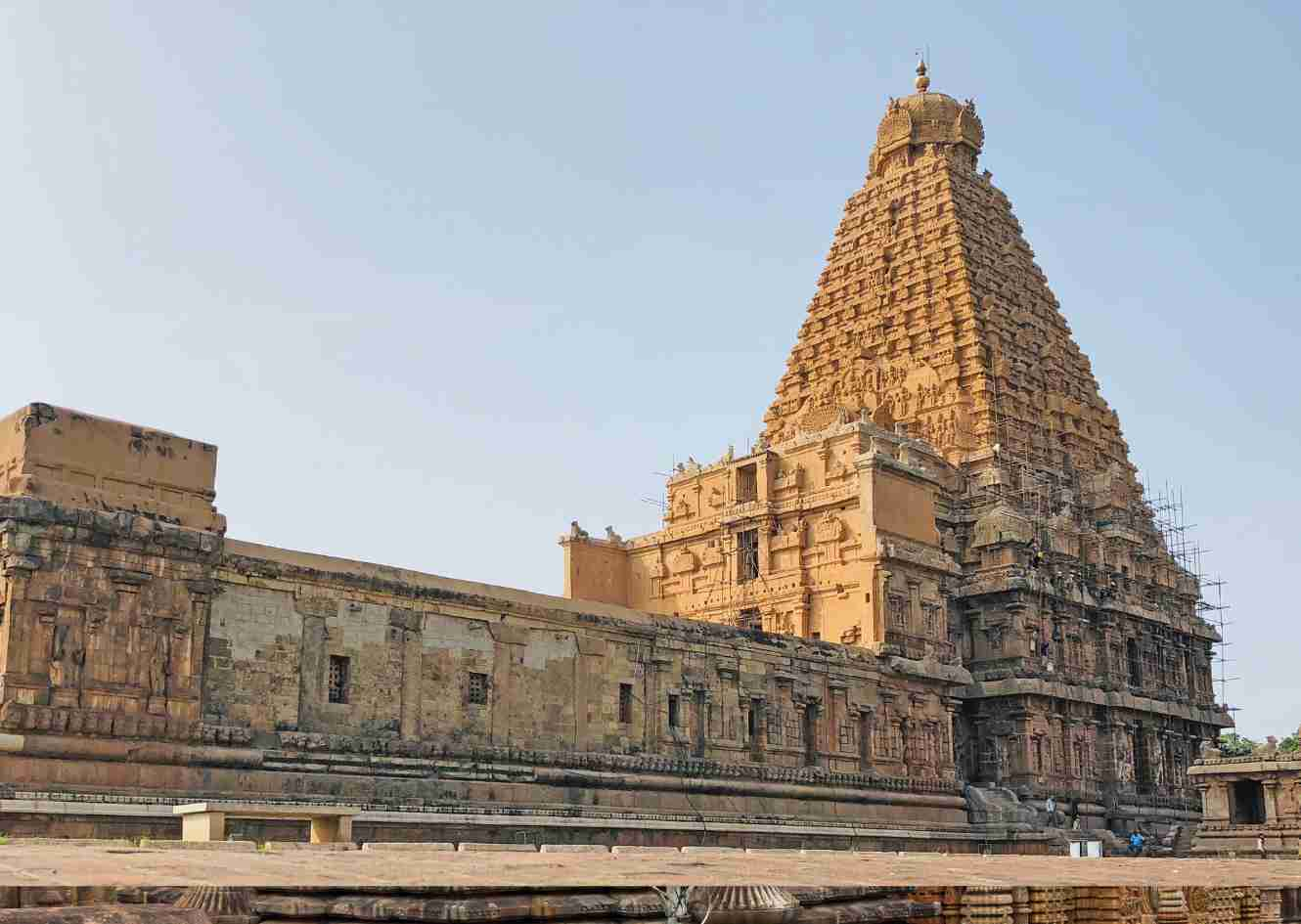The Chola Architecture

The Chola Empire, often regarded as the pinnacle of Dravidian culture and art, contributed significantly to Indian architecture. The reign of the Cholas between the 9th and 13th centuries CE witnessed the construction of numerous temples, demonstrating a high level of sophistication in architectural design, planning, and execution. Chola architecture is renowned for its grandeur, intricate detail, and the use of durable materials.
Prominent Architectural Features
Chola temples are iconic representatives of Dravidian architecture, characterized by pyramid-shaped towers (vimanas), pillared halls (mandapas), and an enclosed area (prakaras). The primary deity’s shrine was typically situated under the tallest vimana. A notable feature was the introduction of the gopuram, an ornate monumental tower, typically at the entrance of the temple complex.
The vimanas, embellished with detailed sculptural work, gradually increase in size from the top to the base, giving them their characteristic pyramid shape. The detailing on the vimanas, depicting various mythological stories, is so intricate that it reveals the artists’ and architects’ thorough understanding of the religious texts and their profound skills in translating them into stone.
Monumental Edifices
The most iconic representation of Chola architecture is the Brihadeeswarar Temple in Thanjavur, built by Raja Raja Chola I in the 11th century. This temple, dedicated to Lord Shiva, showcases the grandeur of Chola architecture. The temple’s vimana, standing at about 216 feet, was the tallest in the world at its construction time. The temple complex houses a massive Nandi (bull), the mount of Shiva, carved out of a single rock.
Another architectural marvel is the temple at Gangaikonda Cholapuram, built by Rajendra Chola I. The temple, although smaller than the Brihadeeswarar Temple, is notable for its detailed sculptural work and the refined elegance of its design.
Art and Inscriptions
The Chola temples also housed numerous bronze statues, the most famous being the statue of Nataraja. These bronzes, made using the lost wax technique, represent the epitome of Chola art and their advanced metallurgical skills.
Many of these temples also recorded the period’s socio-political events. Inscriptions on temple walls provide valuable insights into the reigns of different rulers, their conquests, donations to temples, tax systems, and societal norms. It makes these temples not just religious centers but also historical archives.
Chola architecture, emphasizing scale, detail, and symbolism, significantly influenced Indian temple architecture. Even after the decline of the Chola Empire, their architectural style continued to inspire later empires. It is a testament to their innovative vision and the golden era of Tamil culture and civilization.
